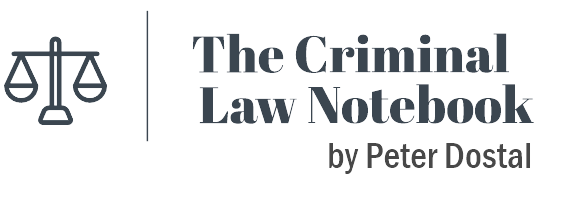Procedural Powers of a Preliminary Inquiry Judge: Difference between revisions
No edit summary Tag: wikieditor |
m Text replacement - "\{\{Fr\|([^\}\}]+)\}\}" to "Fr:$1" |
||
| (5 intermediate revisions by the same user not shown) | |||
| Line 1: | Line 1: | ||
{{ | [[Fr:Pouvoirs_procéduraux_d'un_juge_d'enquête_préliminaire]]{{Currency2|December|2022}}{{LevelZero}}{{HeaderPrelim}} | ||
==General Principles== | ==General Principles== | ||
The procedural powers of a preliminary inquiry judge are enumerated in s. 537. Those powers consist of: | |||
* adjourn the inquiry | |||
* remand the accused into custody for the purpose of establishing identity; | |||
* remand the accused into custody for the duration of proceedings; | |||
* resume the inquiry after being adjourned with consent of parties; | |||
* order attendance of accused while they are in custody; | |||
* permit or prohibit opening or closings submissions from crown on preliminary inquiry; | |||
* permit or prohibit reply evidence to any evidence presented by the accused; | |||
* permit or prohibit any other evidence after hearing the preliminary inquiry case; | |||
* exclude the public or others from the courtroom; | |||
* control the process of the inquiry; and | |||
* permit the accused to be out of court for the duration of the inquiry. | |||
{{quotation2| | {{quotation2| | ||
; Powers of justice | ; Powers of justice | ||
| Line 63: | Line 77: | ||
; Disclosure | ; Disclosure | ||
The accused right to disclosure has no connection with the course of the preliminary inquiry. The power of the court to ensure that disclosure is met is not affected by the inquiry process.<ref> | The accused right to disclosure has no connection with the course of the preliminary inquiry. The power of the court to ensure that disclosure is met is not affected by the inquiry process.<ref> | ||
{{CanLIIRP|Girimonte|6hrn|1997 CanLII 1866 (ON CA)|121 CCC (3d) 33}}{{perONCA|Doherty JA}} <br> | {{CanLIIRP|Girimonte|6hrn|1997 CanLII 1866 (ON CA)|121 CCC (3d) 33}}{{perONCA-H|Doherty JA}} <br> | ||
{{CanLIIRP|Paulishyn|gx79v|2017 ABQB 61 (CanLII)|377 CRR (2d) 29}}{{perABQB|Yamauchi J}} | {{CanLIIRP|Paulishyn|gx79v|2017 ABQB 61 (CanLII)|377 CRR (2d) 29}}{{perABQB|Yamauchi J}} | ||
</ref> | </ref> | ||
| Line 99: | Line 113: | ||
|{{NoteUp|536.5}} | |{{NoteUp|536.5}} | ||
}} | }} | ||
===Proceeding with Accused by Video=== | |||
See s. 715.23. | |||
===Proceeding without Accused=== | |||
Section 537(1)(j.1) provides the preliminary inquiry judge discretion to complete the preliminary inquiry without the accused being present.<ref> | |||
e.g. {{CanLIIR|Sigsworth|jpbs3|2022 BCPC 91 (CanLII)}}{{perBCPC|Patterson J}} | |||
</ref> | |||
Best practices require that the accused file an affidavit and notice of application.<Ref> | |||
{{ibid1|Sigsworth}}{{atL|jpbs3|12}} | |||
</ref> | |||
{{reflist|2}} | |||
==Publication Bans== | ==Publication Bans== | ||
